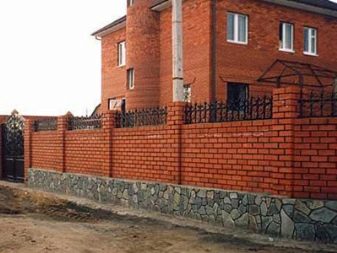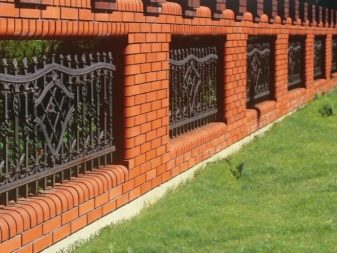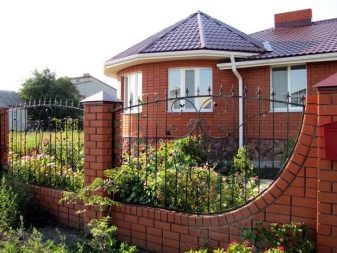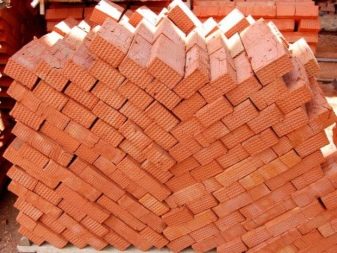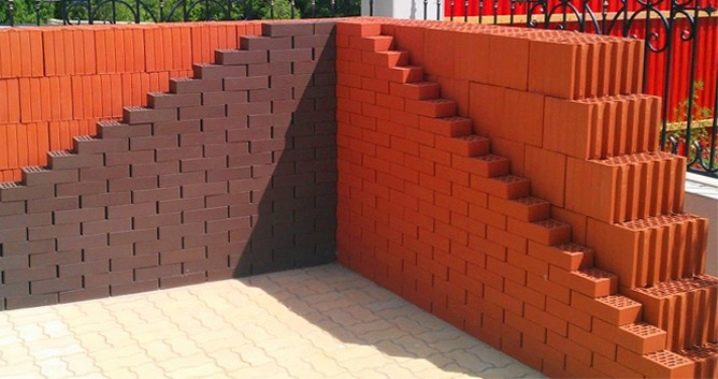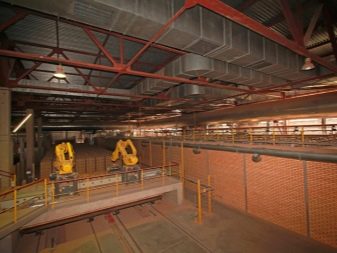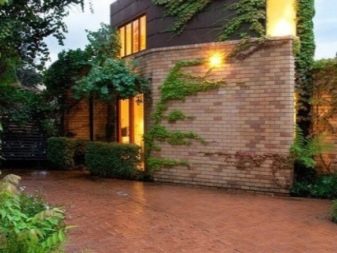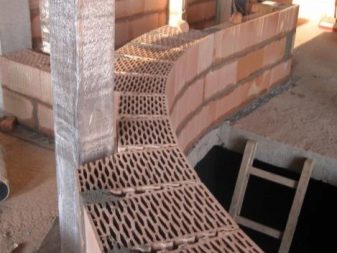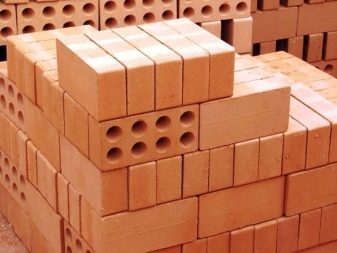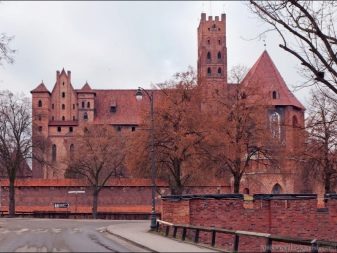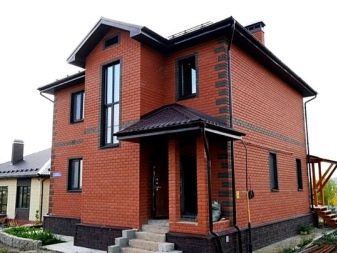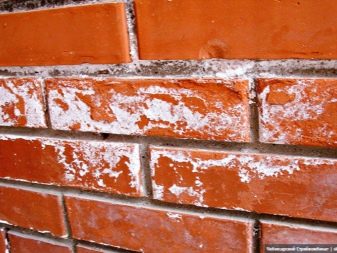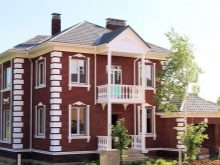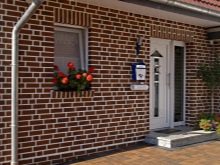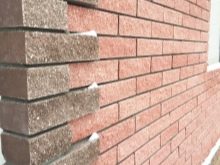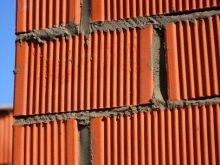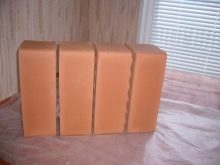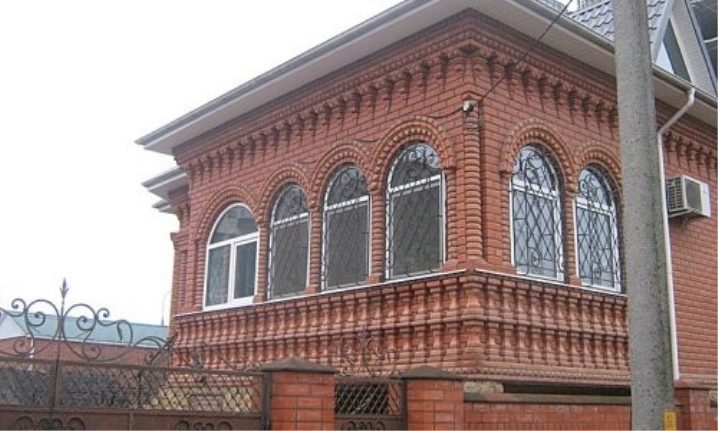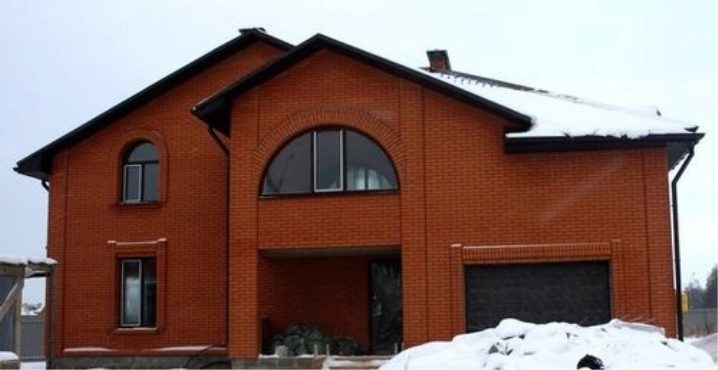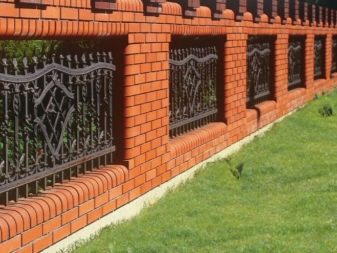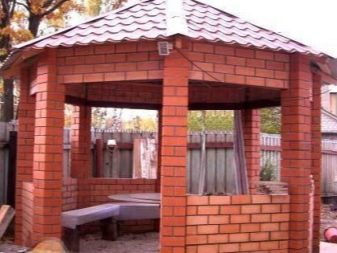Features and sizes of red facing bricks
The red facing brick has an attractive appearance, and it differs from the ordinary stone, which is used for laying of bearing walls. But it can be used not only for finishing the foundations, but also for erecting fences or interior decoration.
Description
This material is common and is used for facial masonry. He is able to make the building stylish and unique. The uniform color of this material creates a festive and collected appearance of the structure. The facing brick can be made from several types of clay and using different technologies, which affects its color and characteristics. The main difference of this brick from the usual is that it has two working parties.
Composition and production
Among the most popular materials for the construction of buildings can be noted ceramic brick, which is made from special grades of clay. In the production of the mixture passes through the fillers, which allows you to organize a continuous stream of raw materials, which then gets into the form. The cutting is done in height, which provides the standard dimensions of this material.
Then the blanks fall into the furnace, where they are affected by the temperature of 1400 degrees.
Thanks to this method of processing, the brick in its composition and properties approaches the natural stone.
- Water resistant.
- Solid.
- Strong.
To reduce the weight of the brick for the house, voids are made inside it, and this structure also helps to improve the thermal insulation properties of the material.
Advantages and disadvantages
The advantages can be attributed to:
- frost resistance;
- water resistance;
- low thermal conductivity;
- durability;
- environmental friendliness.
He also has disadvantages.
- laying work must be carried out by experienced bricklayers;
- material can be damaged during unloading or transportation;
- laying is carried out with the use of a liquid composition, and therefore the time of work is determined depending on the weather;
- after laying on the surface of the brick may appear salt.
It is worth noting that these advantages and disadvantages are characteristic of most types of bricks, and therefore it is necessary to take this into account when choosing.
Types of bricks for finishing
The red facing brick happens several types.
- Clinker. It is the same brick as the usual one, but it is fired at a temperature of +1600, and the composition is close to the melting stage. The result is a durable and moisture-resistant material that can withstand low temperatures, adheres well to the solution and lasts a long time.
- Ceramic. Ordinary brick, which is made of clay and subsequently burned.
- Hyper pressed. Made from cement with the addition of limestone. In this case, the composition does not burn, but is pressed under pressure. The result is a material that is not hollow, which increases its weight. This brick is distinguished by its high cost, but it has a smooth geometry and can sometimes imitate the shape of a natural stone.
Regardless of the species, the sizes of bricks correspond to GOST:
- double (250x120x138 mm);
- single (250x85x65 mm);
- one and a half (250x120x88 mm).
At the same time, the length and other parameters may vary depending on which brick will be purchased, as the most common sizes are indicated above. It is important to take these points into account when combining different types of materials.
Figured ceramic products
Since this brick is mainly intended for decorative finishing of buildings and structures, it can be made not in the usual rectangular geometry, but with original and exclusive parameters. Such a brick is called figured and you can lay out various patterns from it. For example, it will help to beautifully decorate the space near the door or windows, to process corners, cornices or columns. It differs from a standard product in that the front side and sides have cuts at a certain angle.
If we talk about the countries of Europe, there red facing bricks are made in several different sizes and differ from the standard ones, which are produced in our country. Also, the Americans, these products differ in their dimensions. Therefore, when purchasing and ordering such material from abroad, these parameters must be taken into account.If the goods are made and bought from us, then it usually has a length of 25 cm, and the width and height of 12 and 6.5 cm in the standard version.
Scope of use
Hollow red brick is intended for the construction of structures and can be used for load-bearing walls or partitions. And in some cases it is used for cladding. It is worth noting that the price of this material is quite high, and therefore it is rarely used as the main building material, often used as a decorative.
In addition, it can be used for the construction of fences, arbors and other structures where the creation of a decorative part is required. The main purpose of this brick is to create an attractive appearance of the house. In order to further isolate the structure from the mass, a mortar that differs in color from brick can be used for laying.
Facing stone - a traditional material for the exterior of various buildings. Its natural color is provided by the material of manufacture. It can give the house a stylish look. When using this building material, the owner of the structure does not need to care for the facade, as the brick does not require special care, painting or applying additional protective structures.The choice of such material makes it possible to provide a durable and high-quality finish.
An example of the longevity of a red brick in the video below.

